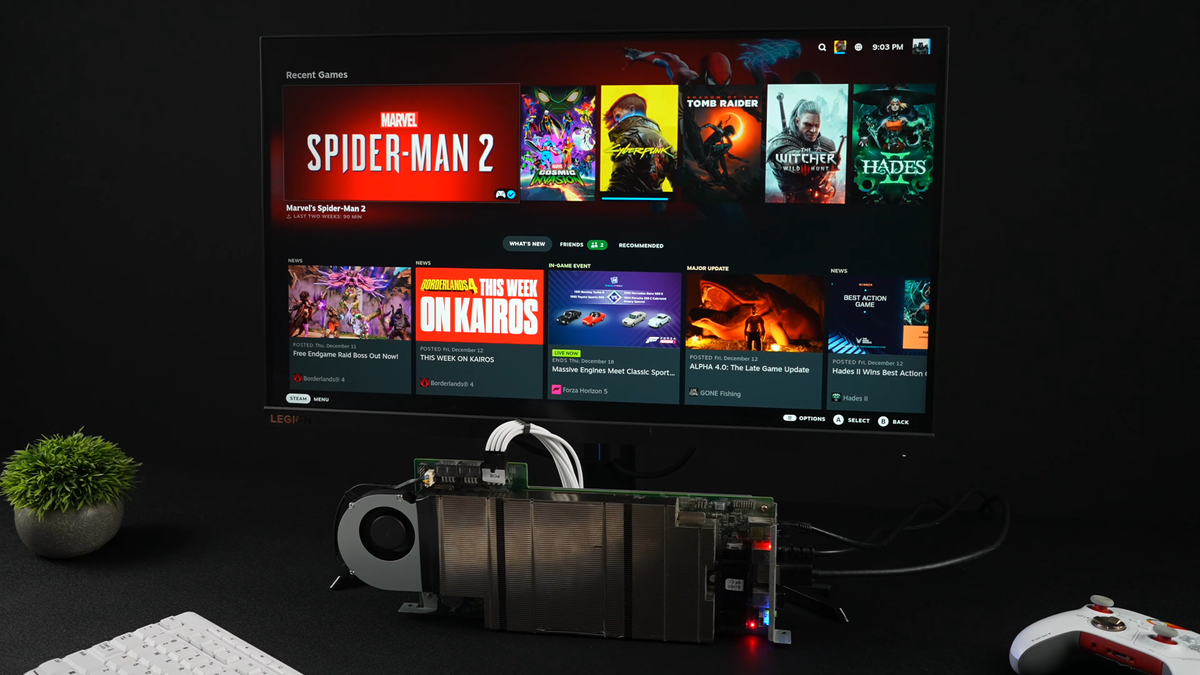The auto giant GM announced today that it is reinvigorating its fleet with a series of new artificial intelligence and machine learning features, all expected to be rolled out within the next three years.
From a new centralized computing platform to equip all of its cars to in-vehicle conversational AI chatbots customized to your needs and preferences, GM is preparing for what it believes to be a coming AI-driven auto industry.
GM’s buzziest feature, which will debut in 2028, is reserved, at least so far, for an electric vehicle offering.
In three years, drivers of the Cadillac Escalade IQ electric SUV will be able to drive completely autonomously, not just with their hands off but also with their eyes off the road, the company claims. As long as the car is on mapped highways, you can read, text, or do whatever you want behind the wheel as the car drives you to your location, GM said.
A turquoise light will flash across the dashboard and the side mirrors to signal when a car is in eyes-off driving mode. The system is equipped with lidar, radar, and cameras to build perception, while real-world driving data trains the decision-making model.
“Our goal is to bring to market the most trusted and scalable eyes-off driving technology on the path to personal autonomy,” GM said in a press release.
The revamp announcement comes as the American electric vehicle industry stands at the precipice of a giant sales drop. Since the electric vehicle tax credit expired on October 1st, electric vehicle prices in the U.S. have become even more expensive, and demand is dropping as automakers scale back EV production. GM announced that it will be taking a $1.6 billion hit this quarter, stemming from a drop in the value of its EV plants and equipment, and supplier contract cancellation costs.
GM has become one of the leaders of the American EV industry, and despite scaling back production of some of its electric vehicles, company executives insist, as recently as during yesterday’s earnings call, that electric vehicles are still the company’s north star. The company has made a significant commitment to completely electrify its fleet by 2035.
During the earnings call, GM executives forecasted that EV demand will continue to suffer into early 2026 before it levels off and finds its natural state. Once demand hits its natural stride, GM executives are confident their “quality and the range of vehicles” will bode well for sales in their EV division.
Buzzy features like full autonomous driving could help drive sales of some of GM’s electric offerings. Tesla is also ramping up efforts to scale its full self-driving technology, despite federal investigations, lawsuits, recalls, and fatal crashes miring its autonomous driving efforts. GM’s chief product officer, Sterling Anderson, who recently joined the company, is a former Tesla executive who led the team that worked on Tesla Autopilot.
GM has significant experience with autonomous driving, as the automaker was the first to offer rudimentary hands-free driving with Super Cruise in 2017. But it has also had its fair share of experience with the risks of autonomous vehicles. The company had to shut down its robotaxi division, Cruise, on the heels of an external probe into the company for lying to regulators about an incident in which one of its robotaxis struck a pedestrian and dragged them 20 feet.
The automaker has since refocused its energy completely on Super Cruise, its autonomous driving technology for personal vehicles that is currently in use for 23 GM models. That technology is making up the foundation of the newly revealed feature as well.
Among the other announcements on Wednesday was an in-vehicle Google Gemini AI chatbot to debut next year, allowing drivers to have conversations with their cars.
It’s the first phase of a grander plan to introduce a custom-built AI for GM vehicles, one that would be fine-tuned to your car’s inner workings and your own personal preferences.
The custom-built AI, which currently has no timeline except for a vague “in the future,” would know your food preferences to recommend a dinner spot en route to your destination and alert you about potential maintenance issues in the car.
“Together, these advancements mark a turning point: AI that drives for you when you want it to, talks with you when you need it to, and gets smarter every day,” the company said.








 English (US) ·
English (US) ·